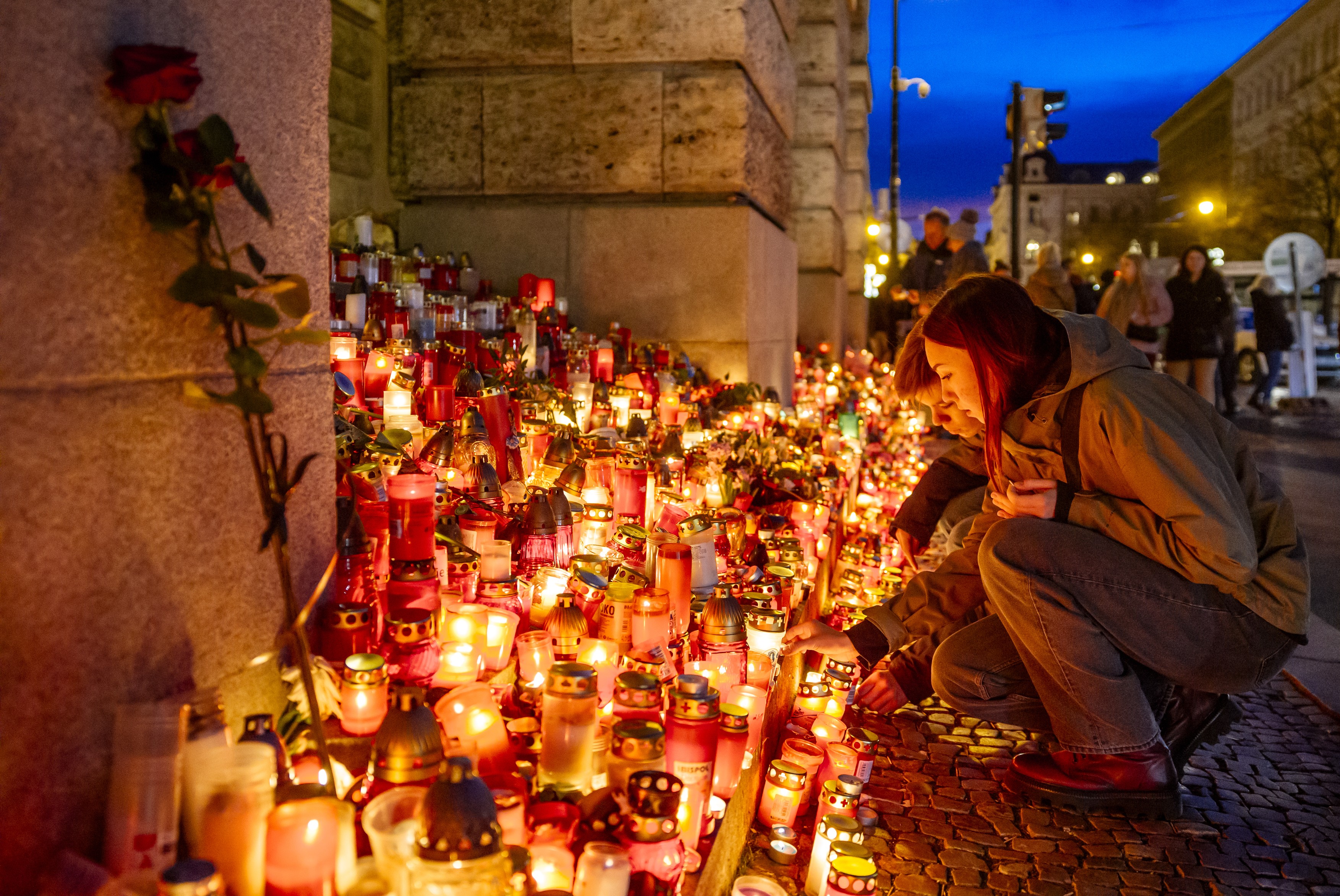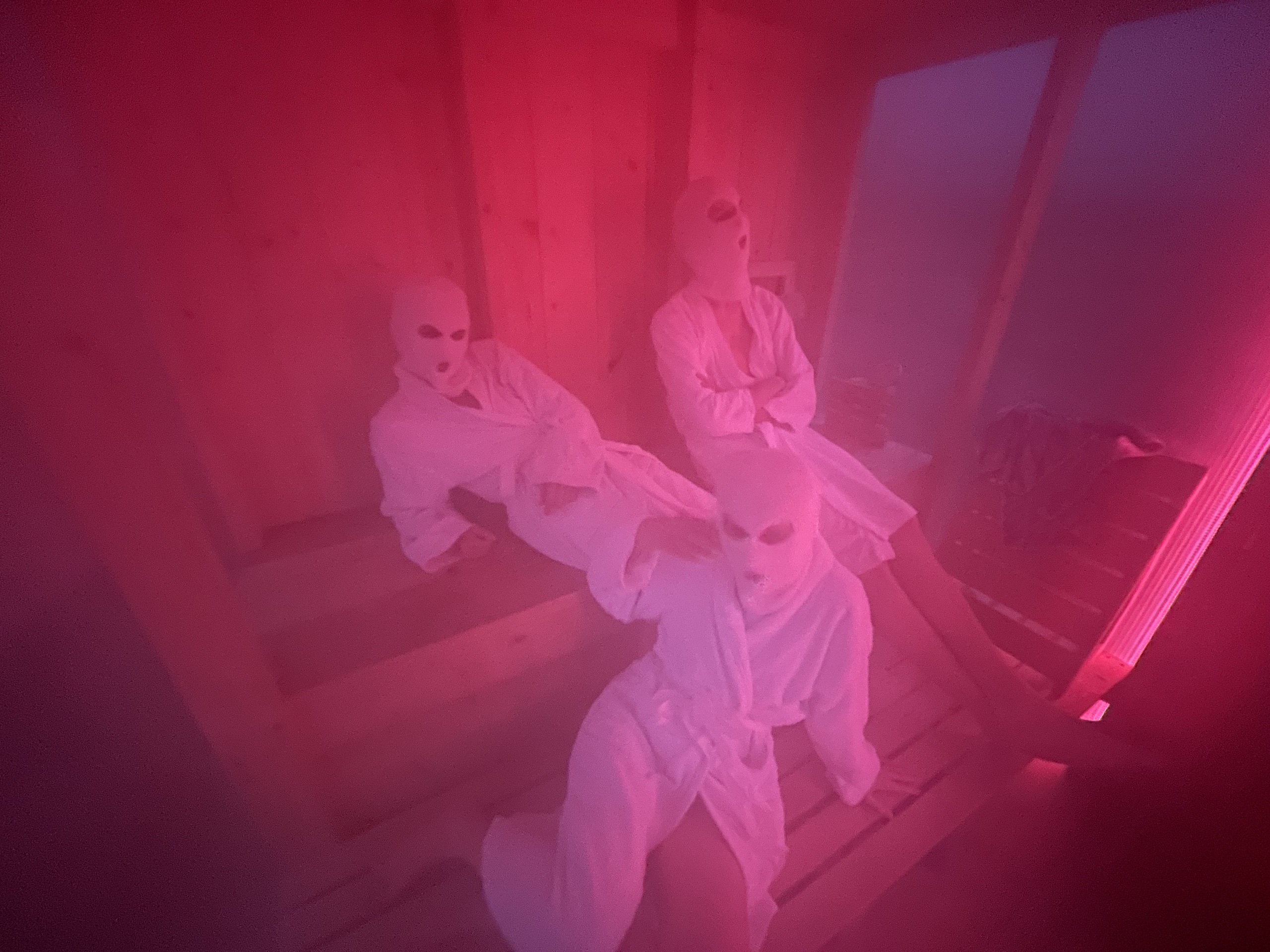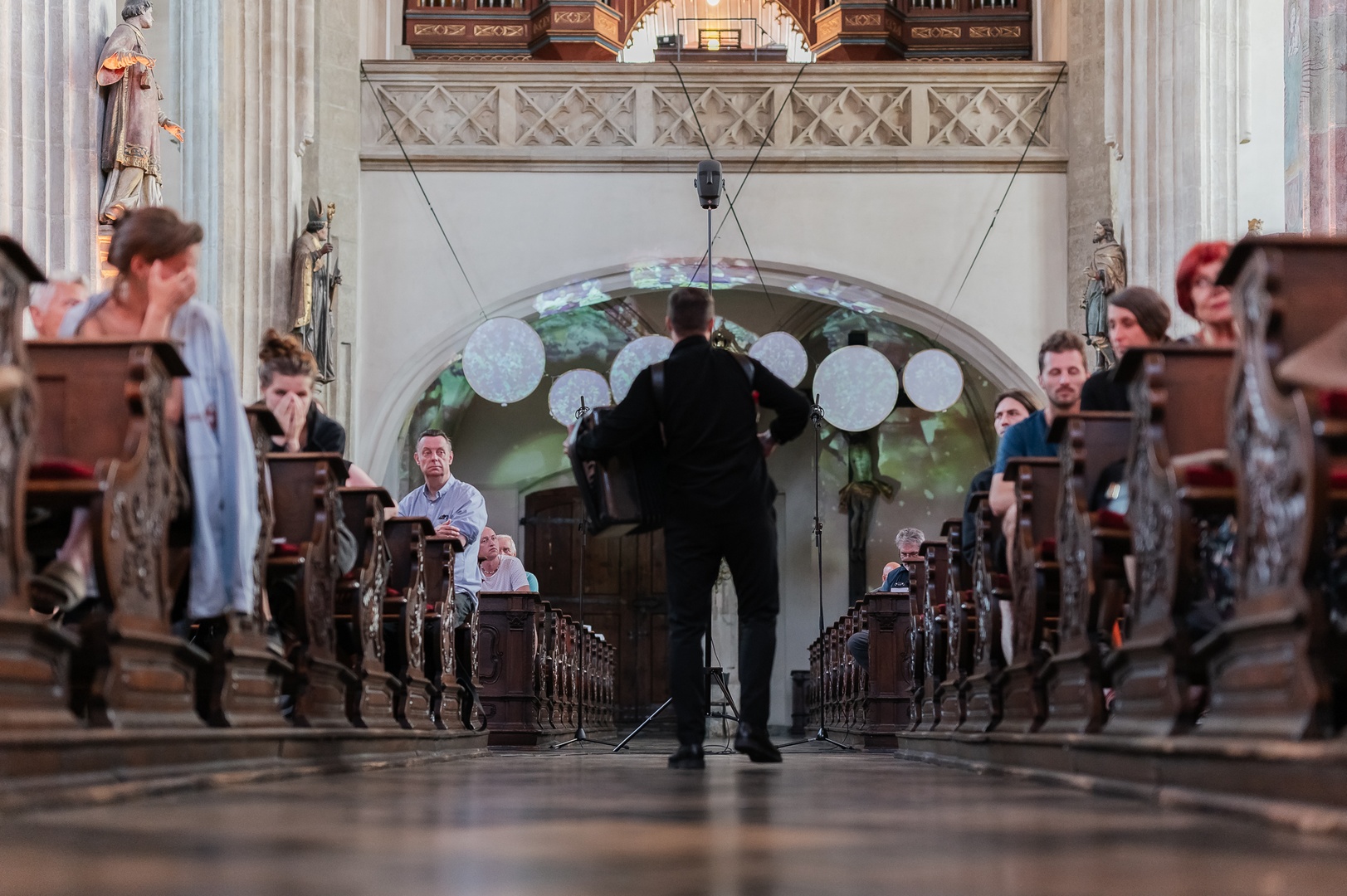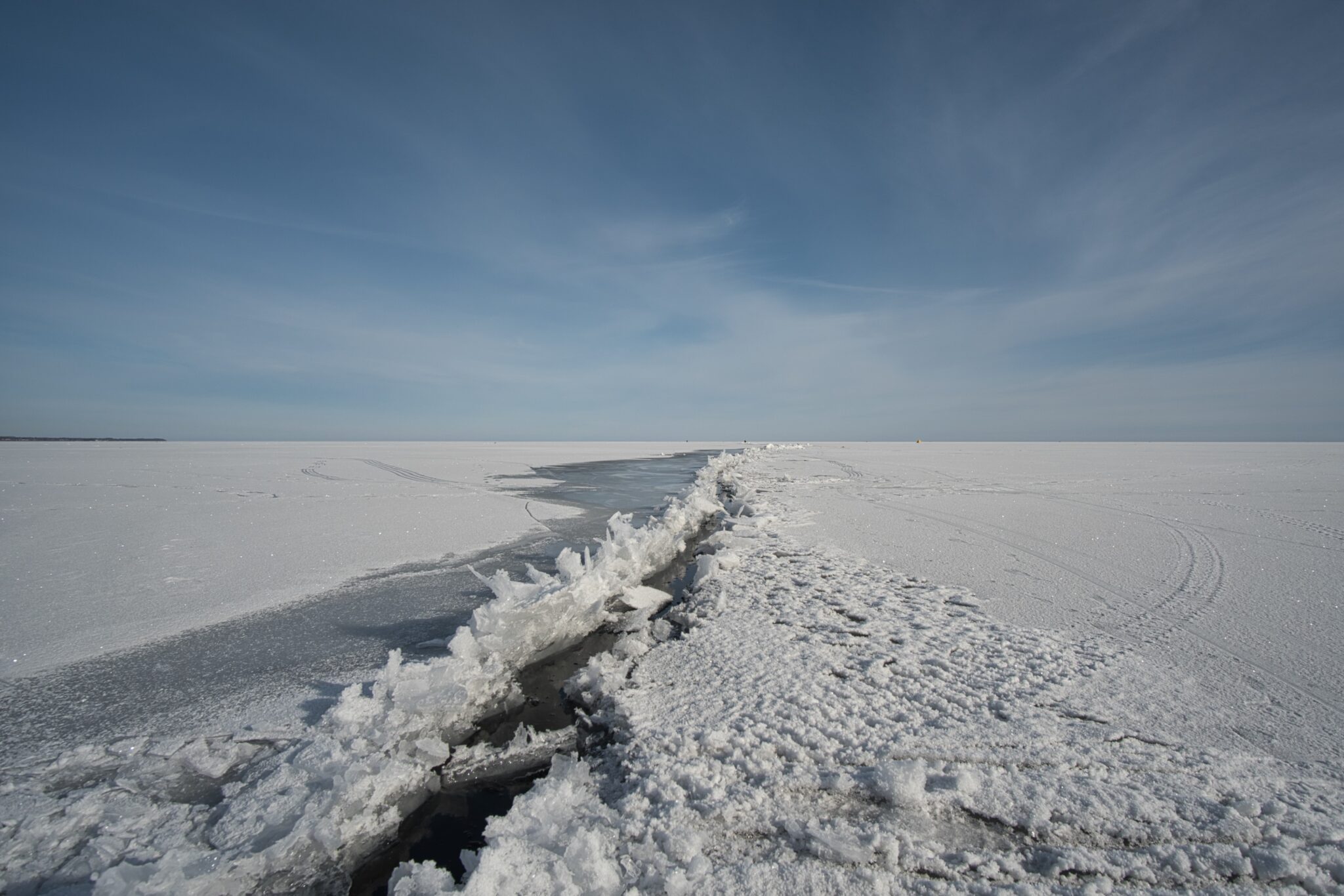Július Fujak: Nitrian Atlantises
an acousmatic composition/acoustic collageI. Po... (After...) II. Pred... (Before...)
I don’t want to speculate about all the things that Atlantis was or might have been. For me, the word has more than just a catastrophic meaning; it evokes neither an ideal (or naively idealized) lost “Eden” nor a “Golden Age”. If anything, it evokes within me an image of a remarkable, bizarre, self-contradictory, and vital unknown culture that had to come to an end in one way or another... I have spent the past nearly 17 years living in the town of Nitra, where I have experienced my own personal “Atlantises” and where I spent a long time not knowing that one real Atlantis actually existed in this region. Some time ago in a bookshop, I began reading the first volume of Pavel Dvořák’s Traces of the Ancient Past, in which I came across a chapter entitled The Ruin of the Nitrian Atlantis about an ancient “proto-civilization” existing in the warm valley of the Nitra River back during the Stone Age some 3,000 years BCE. Its traces can be found in southern Slovakia in the village of Nitriansky Hrádok. Here, at a site known as Zámeček, researchers have found the oldest Neolithic sculpture in Slovakia – the so-called seated Venus of Nitra (which, but the way, was depicted on the Slovak two-crown coin) – as well as strange sophisticated pottery, antler tools with beautifully worked Mycenaean ornamentation, all manner of tools, rings, and even several bone ice skates. We don’t know much about this culture, but it has left us fortifications, burial mounds, immense bulwarks, the ruins of structures built in rows resembling city streets, and signs of deep moats that formed a network of small islands. Elsewhere, there are group graves, in one of which the people’s faces had been ritually(?) seared with fire (older periods show signs of anthropophagy). This society’s peak came later, however. At some point during the Bronze Age (from the mid-17th to mid-15th century BCE), an area of several dozen kilometers experienced a boom of activities, with the development of numerous trades, the planting of crops and the adoption of pagan myths and rituals. Nobody knows what happened to this advanced society – it suddenly and mysteriously disappeared. It is possible that, following a long period of drought, it “evaporated” along with the life-giving water. Or maybe it was afflicted by a different catastrophe – as the aforementioned Dvořák said. Nobody knows...
The existence of this unknown Nitrian Atlantis has fascinated me and de facto inspired me to engage in this acousmatic experiment, whose first part (simply called After...) is dedicated to it. At the end of the summer, my wife Naďka and I traveled to Nitriansky Hrádok, where I made some field recordings at Zámeček along the Nitra River. These form the axis for this entire first section. Later, I recorded an audio collage whose aim is not to “reconstruct” the sounds and music of this lost culture, but merely to symbolize the interplay of past and present and the “flashes” of this ancient and mysterious place’s space-time within the present. Despite the fact that we found almost nothing except for low grass-and-brush-covered hills, one weathered billboard showing the seated Venus, and a man collecting yellow plums for making slivovice – for me, this place possesses an indescribably magical genius loci...
The second part, entitled Before..., is about today’s urban civilization in Nitra. The field recordings were made on 8 August 2013 – a tropical day, perhaps the hottest in the city’s history (nearly 40 degrees in the shade) – coincidentally after more than three weeks of sweltering heat and an unprecedented dry spell… These audio postcards were made on the main promenades of various towns from the hot noontime until early evening: the Mlyny shopping center, the main intersection in front of the Tesco hypermarket, on the road to the hospital (where you can hear women talking in the maternity and gynecology ward), from the evening pub behind an indoor swimming pool, and by the new bridge above the Nitra River... All other electronic sounds, spoken word, fragments and acoustic instruments form a kind of commentary along the margins of the unique recorded situations (not just sonic) of this one day in the life of another Nitrian “Atlantis”...
Recorded during the hot summer of 2013 in Nitra and Nitriansky Hrádok
Július Fujak – bone ocarina, copy of anthropomorphic 4500-year-old urn, black volcanic sand from Atlantis (Santorini island), various sonic objects, percussion, semi-prepared piano, synthesizer, voice, field recordings
Jana Ambrózová – violin improvisations and voice
Andrej Pleštinský – Italian bayan
Zuzana Hanusová - bodhran
Martin Štourač – trumpet, Monika Štrbová – tenor sax, Tomáš Obola – trombone
Juraj Dufek – bass bagpipes
Eduard Fujak and Ondrej Veselý – acoustic guitar
Naďa & Dominik Fujak – spoken word and whispering
Sound engineer: Pavol Brezina
Mixing: Július Fujak and Pavol Brezina
Více z pořadu
-
Hlavní obrázek:
 Téma: Hudební mix
Krátký titulek: Dva roky poté
Custom text:
Téma: Hudební mix
Krátký titulek: Dva roky poté
Custom text:
Box: B-041a
- Počet elementů v boxu: 3
- Nadpis boxu: Nejnovější zprávy
Elementy boxu
- Filtr #1: Vydáno.
- Filtr #2: Typ obsahu je článek nebo seriál.
- Filtr #3: Datum aktualizace článku není starší než 300 dní.
- Filtr #4: Formát je zpráva nebo krátká zpráva.
- Kontextuální filtr #1: Pouze obsah se source doménou jako aktuální doména.
- Řazení #2: Pole "Datum zobrazení v článku" - sestupně.
- Řazení #3: Pole "Datum publikace" - sestupně.
- Pole #1: Hlavní obrázek.
- Pole #2: Jako štítek je pole "Téma".
- Pole #3: Krátký titulek.
- Proklik #1: Odkaz z obrázku a titulku vede na detail obsahu, který se zobrazí v UI příslušného webu.
- Proklik #2: Pokud je "Téma" označeno jako aktivní, existuje veřejná stránka tématu a šítek je odkazem vedoucí na tuto stránku.
-
Hlavní obrázek:
 Téma: Hudební mix
Krátký titulek: Monika: Velké vyhoření
Custom text:
Téma: Hudební mix
Krátký titulek: Monika: Velké vyhoření
Custom text:
Box: B-041a
- Počet elementů v boxu: 3
- Nadpis boxu: Nejnovější zprávy
Elementy boxu
- Filtr #1: Vydáno.
- Filtr #2: Typ obsahu je článek nebo seriál.
- Filtr #3: Datum aktualizace článku není starší než 300 dní.
- Filtr #4: Formát je zpráva nebo krátká zpráva.
- Kontextuální filtr #1: Pouze obsah se source doménou jako aktuální doména.
- Řazení #2: Pole "Datum zobrazení v článku" - sestupně.
- Řazení #3: Pole "Datum publikace" - sestupně.
- Pole #1: Hlavní obrázek.
- Pole #2: Jako štítek je pole "Téma".
- Pole #3: Krátký titulek.
- Proklik #1: Odkaz z obrázku a titulku vede na detail obsahu, který se zobrazí v UI příslušného webu.
- Proklik #2: Pokud je "Téma" označeno jako aktivní, existuje veřejná stránka tématu a šítek je odkazem vedoucí na tuto stránku.
-
Hlavní obrázek:
 Téma: Hudební mix
Krátký titulek: Jan Trojan: Silencio
Custom text:
Téma: Hudební mix
Krátký titulek: Jan Trojan: Silencio
Custom text:
Box: B-041a
- Počet elementů v boxu: 3
- Nadpis boxu: Nejnovější zprávy
Elementy boxu
- Filtr #1: Vydáno.
- Filtr #2: Typ obsahu je článek nebo seriál.
- Filtr #3: Datum aktualizace článku není starší než 300 dní.
- Filtr #4: Formát je zpráva nebo krátká zpráva.
- Kontextuální filtr #1: Pouze obsah se source doménou jako aktuální doména.
- Řazení #2: Pole "Datum zobrazení v článku" - sestupně.
- Řazení #3: Pole "Datum publikace" - sestupně.
- Pole #1: Hlavní obrázek.
- Pole #2: Jako štítek je pole "Téma".
- Pole #3: Krátký titulek.
- Proklik #1: Odkaz z obrázku a titulku vede na detail obsahu, který se zobrazí v UI příslušného webu.
- Proklik #2: Pokud je "Téma" označeno jako aktivní, existuje veřejná stránka tématu a šítek je odkazem vedoucí na tuto stránku.
-
Hlavní obrázek:
 Téma: Hudební mix
Krátký titulek: John Grzinich: Křik ledu / Ice Crying
Custom text:
Téma: Hudební mix
Krátký titulek: John Grzinich: Křik ledu / Ice Crying
Custom text:
Box: B-041a
- Počet elementů v boxu: 3
- Nadpis boxu: Nejnovější zprávy
Elementy boxu
- Filtr #1: Vydáno.
- Filtr #2: Typ obsahu je článek nebo seriál.
- Filtr #3: Datum aktualizace článku není starší než 300 dní.
- Filtr #4: Formát je zpráva nebo krátká zpráva.
- Kontextuální filtr #1: Pouze obsah se source doménou jako aktuální doména.
- Řazení #2: Pole "Datum zobrazení v článku" - sestupně.
- Řazení #3: Pole "Datum publikace" - sestupně.
- Pole #1: Hlavní obrázek.
- Pole #2: Jako štítek je pole "Téma".
- Pole #3: Krátký titulek.
- Proklik #1: Odkaz z obrázku a titulku vede na detail obsahu, který se zobrazí v UI příslušného webu.
- Proklik #2: Pokud je "Téma" označeno jako aktivní, existuje veřejná stránka tématu a šítek je odkazem vedoucí na tuto stránku.
